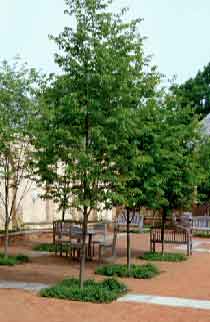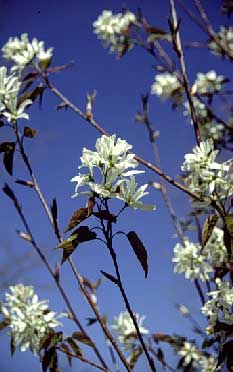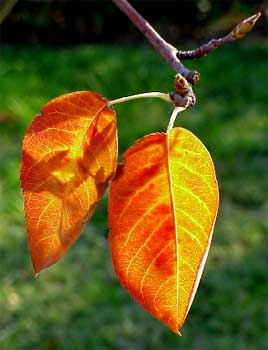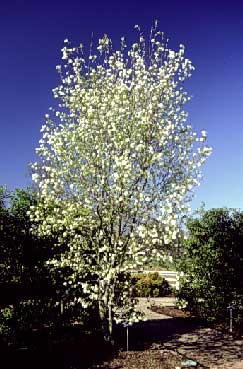 Downy Serviceberry - Amelanchier arborea
Downy Serviceberry - Amelanchier arborea
Rose Family (Rosaceae)
The tallest of the serviceberries native to Kentucky, downy serviceberry is a small understory tree on well-drained sites. White flowers appear early in spring. The common name serviceberry refers to memorial services held in the spring at the same time as the flowers bloom. The Kentucky champion tree is in McCreary County and is over 70 feet tall.
- Native habitat: Maine to Iowa, as far south as northern Florida to Louisiana.
- Growth habit: Small tree or multistemmed shrub with a rounded crown.
- Tree size: Height ranges from 15 to 30 feet with a variable spread. Medium growth rate.
- Flower and fruit: Perfect white flowers are borne in 2- to 4-inch-long pendulous racemes in early spring. Flowers are effective for only 4 to 7 days. Fruit is a berry-like pome that is 1/4- to 1/3-inch in diameter. Fruit changes from green to red to purplish black and ripens in June. Birds love the fruit.
 Leaf: Leaves are alternate, simple, 1 to 3 inches long and medium to dark green. Fall color ranges from yellow to orange to deep red.
Leaf: Leaves are alternate, simple, 1 to 3 inches long and medium to dark green. Fall color ranges from yellow to orange to deep red.- Hardiness: Winter hardy to USDA Zone 4.
The name serviceberry comes from funeral or memorial service. This tree flowers very early in spring, about two weeks before dogwood. Legend has it that when the serviceberry was flowering it was finally warm enough to dig a grave and have a funeral service. Serviceberry is also known as sarvisberry. "Sarvis" is the Appalachian pronunciation of service. All the serviceberries make good small landscape trees or multistemmed shrubs. Downy serviceberry is most effective when used in a naturalistic setting or with an evergreen background.
 Serviceberry is a common understory tree in southeastern forests of North America. The wood of serviceberry is among the heaviest in the U.S., and would be more valuable if the trees grew larger. Serviceberry's fruit is used to make pies and sweetbreads and can be dried like raisins. Cherokees used serviceberry tea to aid digestion, and children who had worms were given baths in serviceberry tea. Native Americans used the tree's straight wood to make arrow shafts.
Serviceberry is a common understory tree in southeastern forests of North America. The wood of serviceberry is among the heaviest in the U.S., and would be more valuable if the trees grew larger. Serviceberry's fruit is used to make pies and sweetbreads and can be dried like raisins. Cherokees used serviceberry tea to aid digestion, and children who had worms were given baths in serviceberry tea. Native Americans used the tree's straight wood to make arrow shafts.
Francois Michaux wrote of serviceberries being available in Philadelphia markets, but only children bought them. Serviceberries have good fall color and the bark is grayish and ornamental. The bark of downy serviceberry often has a reddish cast. It becomes ridged and furrowed as the tree ages.


